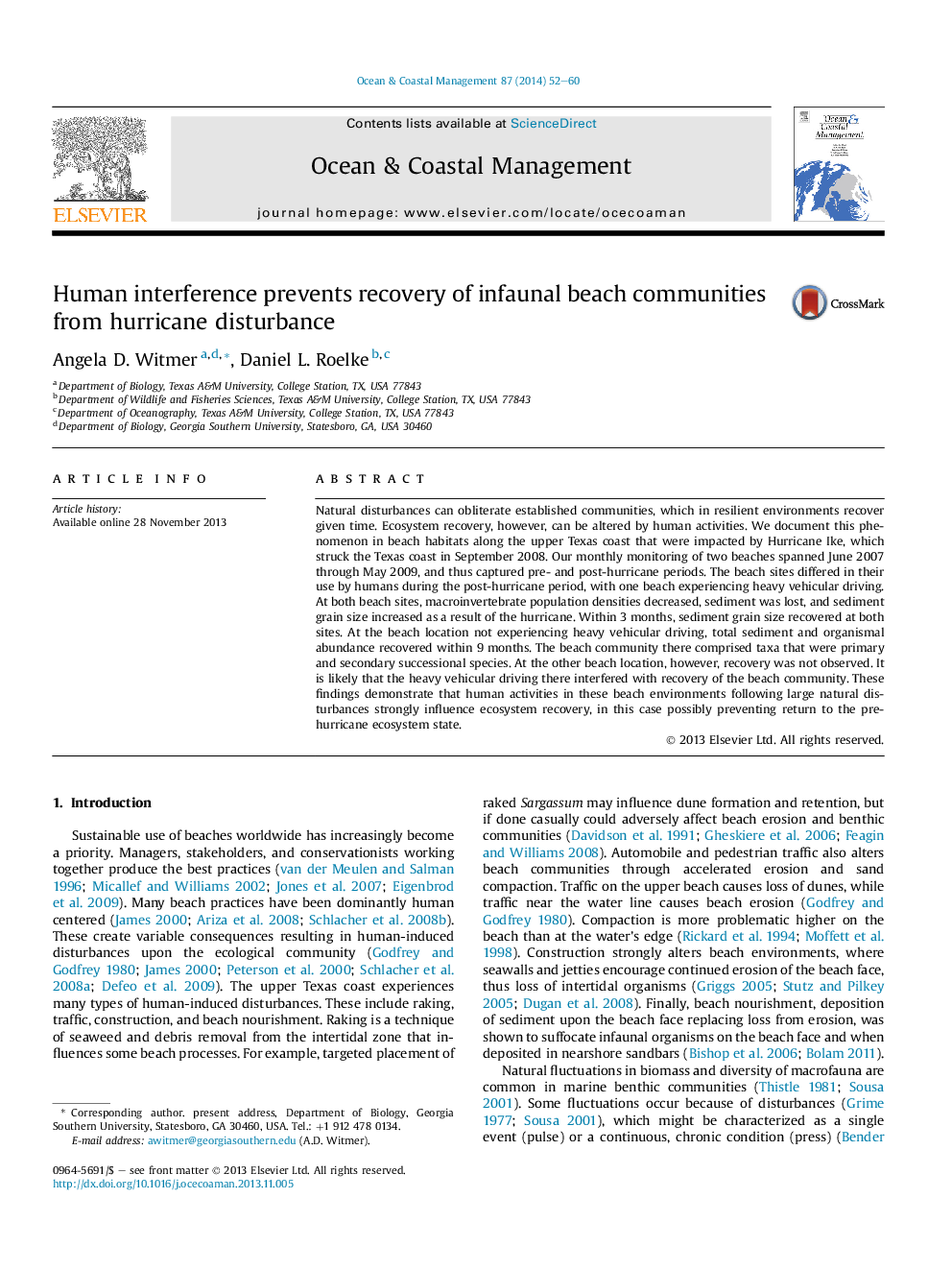| Article ID | Journal | Published Year | Pages | File Type |
|---|---|---|---|---|
| 1723819 | Ocean & Coastal Management | 2014 | 9 Pages |
Abstract
Natural disturbances can obliterate established communities, which in resilient environments recover given time. Ecosystem recovery, however, can be altered by human activities. We document this phenomenon in beach habitats along the upper Texas coast that were impacted by Hurricane Ike, which struck the Texas coast in September 2008. Our monthly monitoring of two beaches spanned June 2007 through May 2009, and thus captured pre- and post-hurricane periods. The beach sites differed in their use by humans during the post-hurricane period, with one beach experiencing heavy vehicular driving. At both beach sites, macroinvertebrate population densities decreased, sediment was lost, and sediment grain size increased as a result of the hurricane. Within 3 months, sediment grain size recovered at both sites. At the beach location not experiencing heavy vehicular driving, total sediment and organismal abundance recovered within 9 months. The beach community there comprised taxa that were primary and secondary successional species. At the other beach location, however, recovery was not observed. It is likely that the heavy vehicular driving there interfered with recovery of the beach community. These findings demonstrate that human activities in these beach environments following large natural disturbances strongly influence ecosystem recovery, in this case possibly preventing return to the pre-hurricane ecosystem state.
Related Topics
Physical Sciences and Engineering
Earth and Planetary Sciences
Oceanography
Authors
Angela D. Witmer, Daniel L. Roelke,
